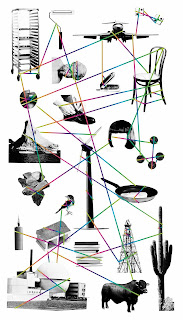Marketing attention is switching towards the digital universe. Some of this is hype surrounding the new genre - - although, the word "hype" needs to be viewed in the context that surveys suggest many consumers now spend more time online than watching broadcast television.
At the same time we are witnessing a technology driven blending of private and professional networking. The individual brand of "Me" has expanded to three spheres of influence - - (1.) Strategic Networks - - people outside your control who will enable you to reach key organizational objectives, (2.) Operational Networks - - people you need to accomplish your routine tasks, and (3.) Personal Networks - - kindred spirits outside you organization who can help you with personal advancement.
All of this has produced an environment in which the six degrees of separation of 20-years ago is down to three - - the brand of "Me" has a much easier time actually seeing a network and figuring out where the brand of "Me" wants to go with the contacts that you have.
The
Financial Times covered this changed in an article on November 29, 2011 - -
Expanded Spheres of Influence. Companies and recruiters see this ability to connect personal and professional networks as a key skill set. The
Times writes the following:
"Big recruiters increasingly see the ability to leverage much networks as an essential skill. Gemma Lines, head of graduate marketing, recruitment and development for Europe, the Middle East and Africa at Citigroup, says networking is a competency it expects of its new graduate recruits. "We receive 50,000 applications each year and those with the ability to establish links have a huge advantage," she says.
Such individuals are seen as being better equipped for dealing with clients, better able to get to grips with an organizational culture, and more likely to thrive in a globally minded organization.
To appraise their networking qualities, candidates who make it to the final rounds of recruitment are tested on their ability to build relationships. They are put into working groups and observed to see how quickly they can establish a rapport with colleagues. The groups are then mixed up and the candidates ability to forge links with their new team is assessed.
Once hired, graduates join the company a year after selection. To facilitate networking beforehand, new recruits are encouraged to connect with each other on Facebook and to form communities. Once they start at the company, they are not allowed to use sites such as Facebook or LinkedIn on work computers and are instead directed to Citi 2.0, the company's internal networking platform - - although they are allowed to access external networks via smartphones."





































